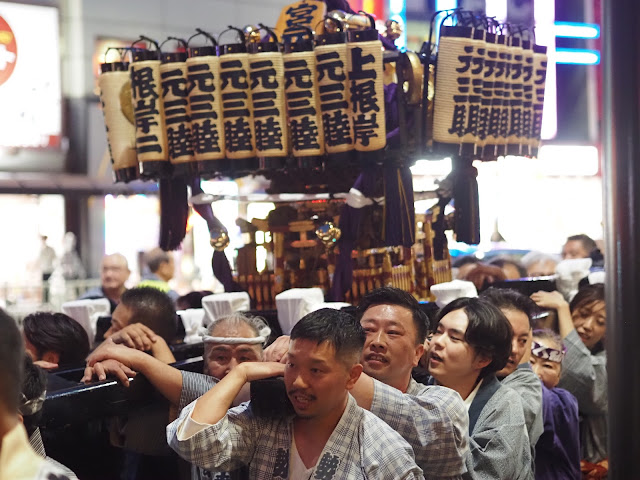2 more "ankyo" streets
One of the grossest parts of Tokyo is Harajuku's crowded Takeshita Street. At one point it was a mecca for girly kawaii (cute) fashion trends and a magnet for indie designers. For 50 years, Japanese youth culture percolated here from the ground up, giving birth to legendary streetwear brands like Bounty Hunter and Bathing Ape.
Running parallel to noisy Takeshita Street, maybe 90 feet away, is sedate Mozart-Brahms Lane, built on top of a watercourse that was hastily covered after the war, like the stream that runs under Snake Street. It is an ankyo.
With its small cafes and elegant shops, the curvy track couldn't be more different from noisy Takeshita. Unfortunately, since the paths are so close together, the screams of Takeshita shopgirls trying to entice customers can be heard on Mozart-Brahms as well.
This little river path is only 6 feet wide. It is on a lower level than its surroundings (owing to river topography), and car traffic is impossible.
Mozart-Brahms Lane meanders for about 300 yards north to Meiji Avenue. That it has survived in one of Tokyo's most heated real estate areas is something of a miracle.
Most of the buildings along the lane are low-rise by Tokyo standards, averaging about three stories. Dashes of greenery line the path.
As you walk Mozart-Brahms Lane, an idiosyncratic melange of overhangs, plants, stairs and occasional plaza areas reveal themselves.
There is a diverse visual menu, multiple points of interest, and a sense of community. It is a place to be enjoyed.
To the north, near Yoyogi Station, is another such ankyo backstreet. It has no name that I am aware of. Its southern terminus is in the shadow of the elevated Shinjuku Route of the Metropolitan Expressway.
If you approach it from here, look for the stairway below. Easy to miss! Because rivers tend to be in the lowest parts of a city (necessitating stairs after their conversion to back alleys), it is a de facto pedestrian street. I have been studying maps for months hoping to find this place, so this is pretty exciting. I feel like Magellan.
Like so much of low-rise Tokyo, it is a quiet oasis and an attractive place to live. You want spaces like this where kids and adults can congregate safely. My only worry is that some literal-minded bureaucrats order that the alley be widened.
They would legally be justified in doing so. Few countries are so prone to natural disasters, and Japan's Building Standards Law currently requires that backstreets like this be a little over 13 feet wide (4 meters). A kajillion lanes in the country technically run afoul of the mandate.
Along the path, there is a mixture of housing blocks and small single-family residences. I recognize some of these free-spirited collectors who organize their personal spaces just so. They are my own neighbors back home, and they play an important role in defining a street's fabric, milieu, what have you.
"We are having a flower and green festival," announces the Yoyone Club.




















Comments
Post a Comment